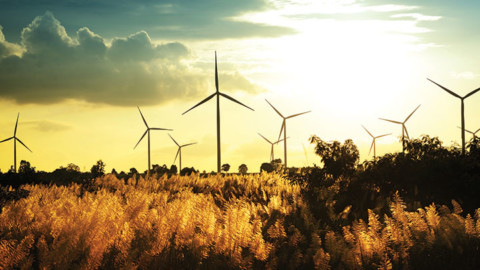In its latest Australia east coast gas market research, Wood Mackenzie forecasts that the LNG netback price for Australia’s east coast could bottom out to $6.50 to $9 per gigajoule (GJ) over the next two years.
The research highlights some key trends impacting the east coast gas market including:
Global LNG oversupply leading to lower LNG netback prices domestically
While long anticipated, global LNG oversupply did not materialise until 2019. Between 2016 and the end of 2019 some 100 million tons of new LNG production will have come on, with annual growth averaging close to 10 per cent. At the other end of the equation, slower demand growth from China contributes to excess supply in the market.
Wood Mackenzie research director, Nicholas Browne, said the price of gas in Queensland as a netback from the Asian LNG price fell from an average of $11/GJ in 2018 to an average of $7/GJ in the first three quarters of 2019.
“Expect lower-for-longer spot LNG prices into 2020s, putting additional downward pressure on LNG netback prices and potentially contract price levels,” Mr Browne said.
Availability of gas from LNG projects to domestic market
With LNG prices at record lows, there is now less incentive for Queensland LNG producers to liquefy additional gas and sell it to a low but still uncertain LNG spot market. In addition, some Asian buyers are deciding to reduce their contracted offtake from Queensland LNG as they are more expensive than other alternatives.
Furthermore, in the face of measures such as the Australian Domestic Gas Security Mechanism (ADGSM), additional gas is being developed. Because of these three factors, more gas is being made available by the LNG projects to the domestic market.
Collectively, APLNG, QCLNG and GLNG are delivering at least 100PJ per annum of additional gas supply to the domestic market.
AEMO revises long-term gas demand upwards driven by gas-powered generation (GPG)
The higher GPG demand forecast in Victoria in particular, will amplify the risk of gas shortages longer-term. There is also potential downside risk to industrial demand in the long run as prices rise.
Mr Browne said the east coast will need the development of contingent reserves.
“The AEMO does not see supply shortage before 2030 and is reliant on contingent resources from as soon as 2021. In contrast, we think the shortfall could come as early as 2023 and forecasts that much of this contingent gas is unlikely to be developed and hence third party and equity LNG gas will be at risk,” Mr Browne said.
“2023 is also around the same time as when the global LNG market starts to tighten, and international prices are likely to rise. As such, with the east coast market still contractually short of gas, there will be a call on gas contracted to or owned by the LNG projects. In turn, this could impact domestic prices.”
Additional sources of gas supply needed, and Narrabri could help
The Narrabri project has remained undeveloped since its discovery in 1993 due to strong opposition from various groups. However, with the state government voicing support for its development, albeit with a reduced scope, New South Wales gas production could be set for an uplift.
“Looking at first gas from 2023, we are forecasting about 36PJ per annum of gas production with potential of up to 73PJ per annum when it becomes fully operational,” Mr Browne said.
“This is timely as we expect a lower Gippsland Basin supply through the 2020s. Narrabri would have a significant impact on the balance of the southern gas markets and particularly New South Wales, which would become increasingly self-reliant. Given how short the market will become, any additional sources of gas will have a significant impact.
“There is little doubt that LNG imports will be needed by Australia’s east coast by at least 2025. But given the tight supply-demand balance, a regasification terminal needs to be in place, in the event seasonal shortfalls materialise even earlier.
“We believe that a terminal in Victoria is more urgently required and would see higher utilisation than a terminal in New South Wales. But ultimately, if a terminal in New South Wales moves ahead first, this could also supply Victoria, so there is a clear first mover advantage.”
















